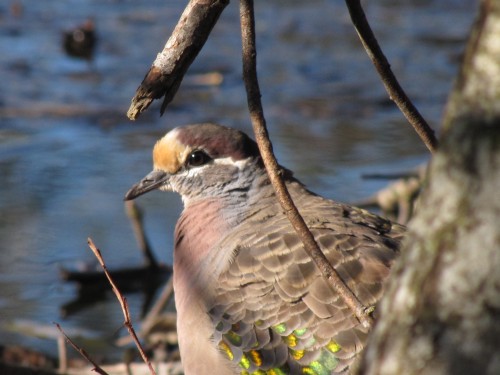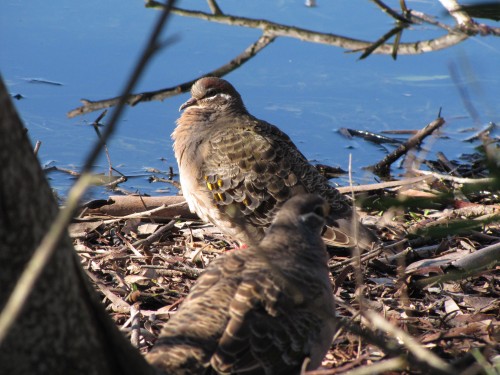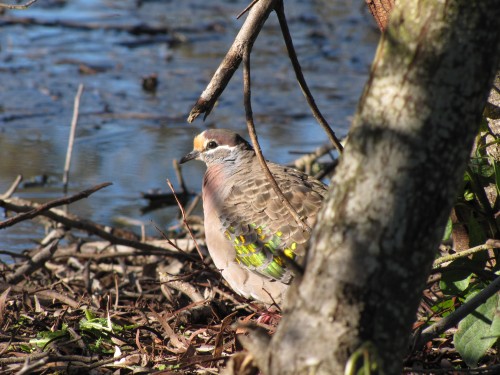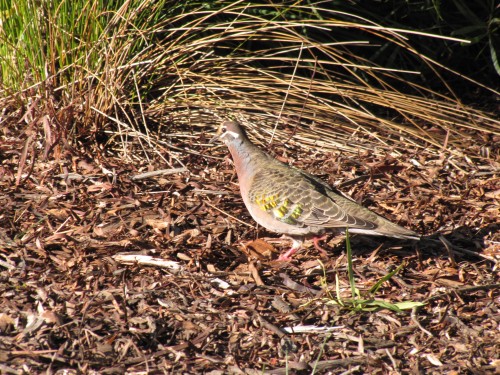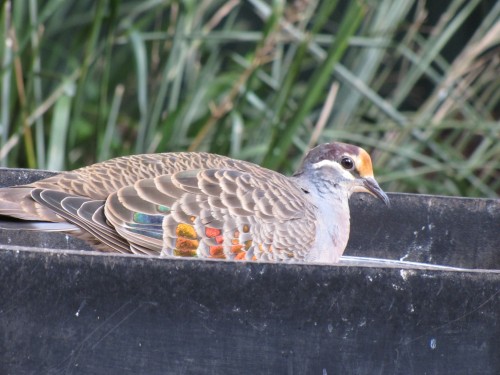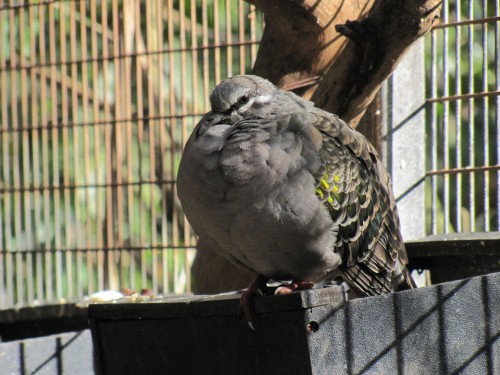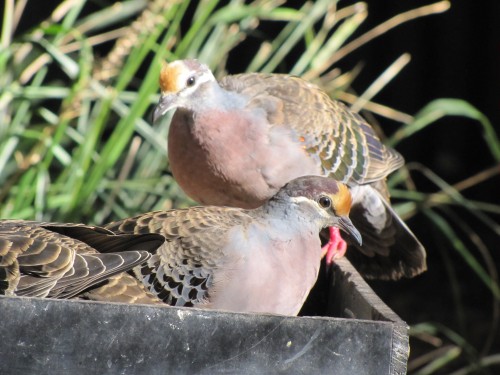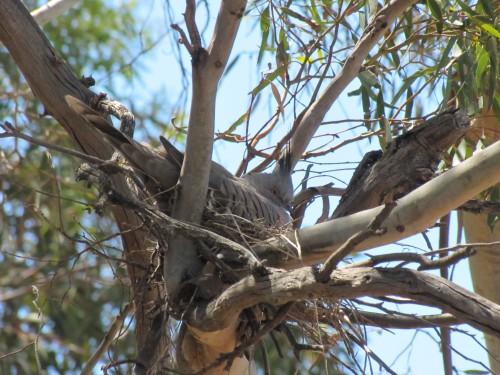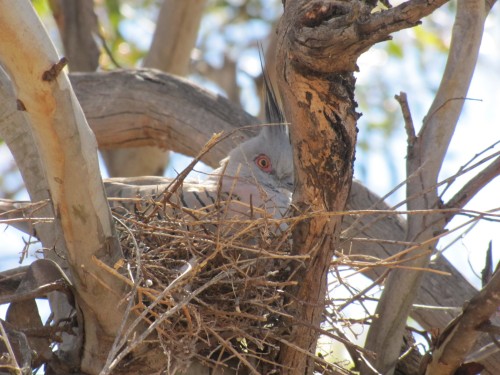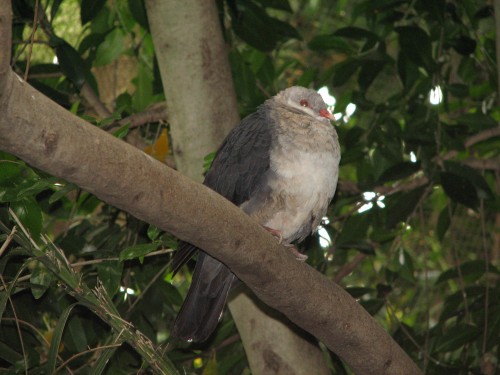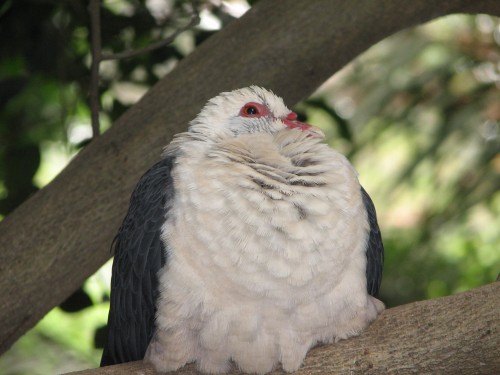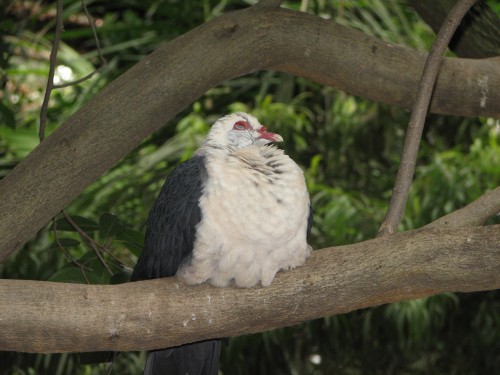Peaceful Doves in my garden
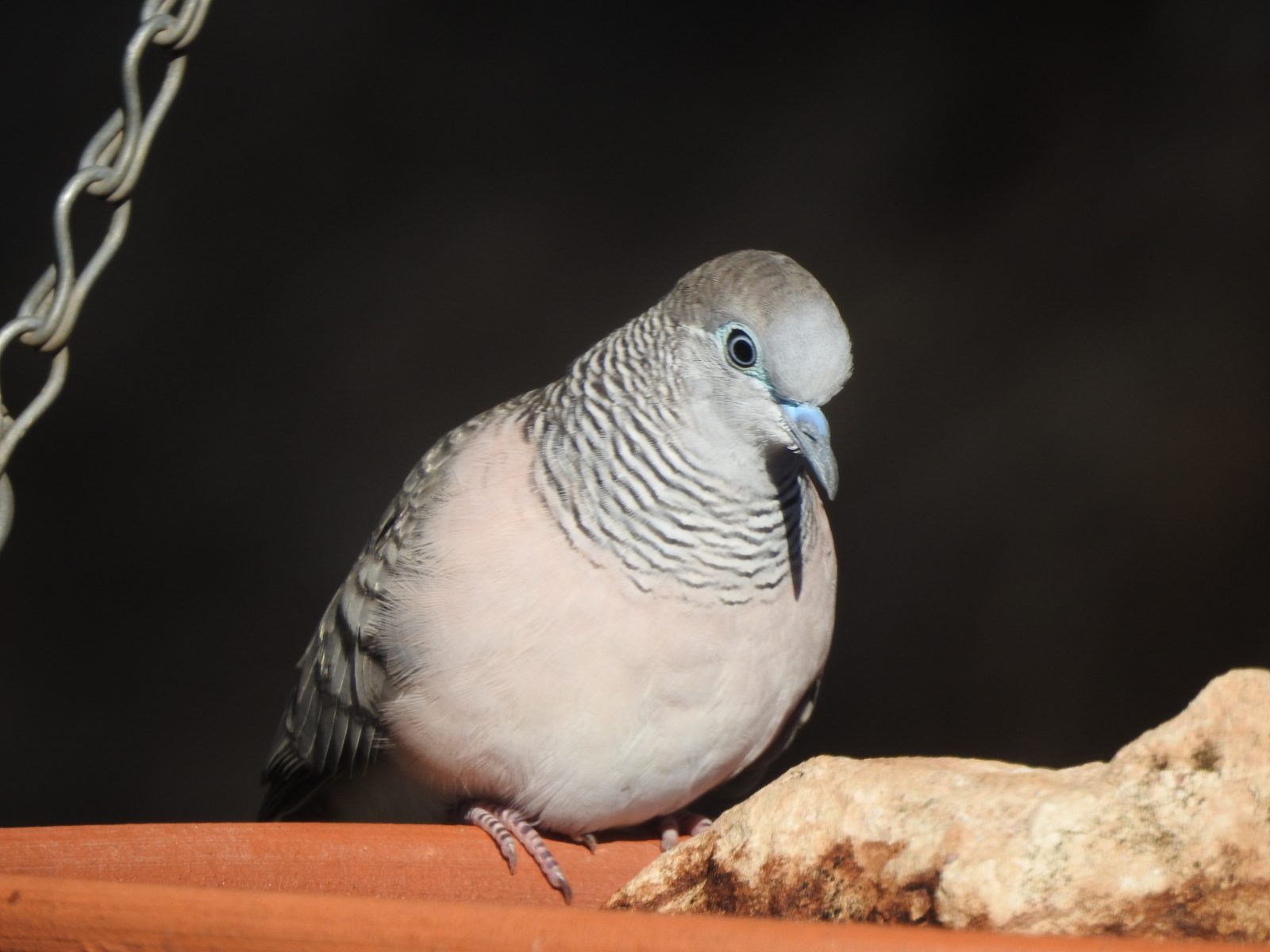
One bird species that I love seeing and hearing in my garden here in Murray Bridge, South Australia, is the Peaceful Dove as shown in today’s photos. I live on the western edge of the rural city of Murray Bridge on a five-acre (two-hectare) block of land.
As well as a large variety of Australian native plants and trees, I have a small orchard and some remnant mallee scrub. My property adjoins several other mallee scrub areas, including Kinchina Conservation Park about a kilometre to the west.
Because there is so much native vegetation remaining in this area, the bird life can be prolific. I have lived here for over 35 years and have kept monthly lists of birds observed over that period, except for a few periods when I was away. This includes many holidays interstate and several trips overseas.
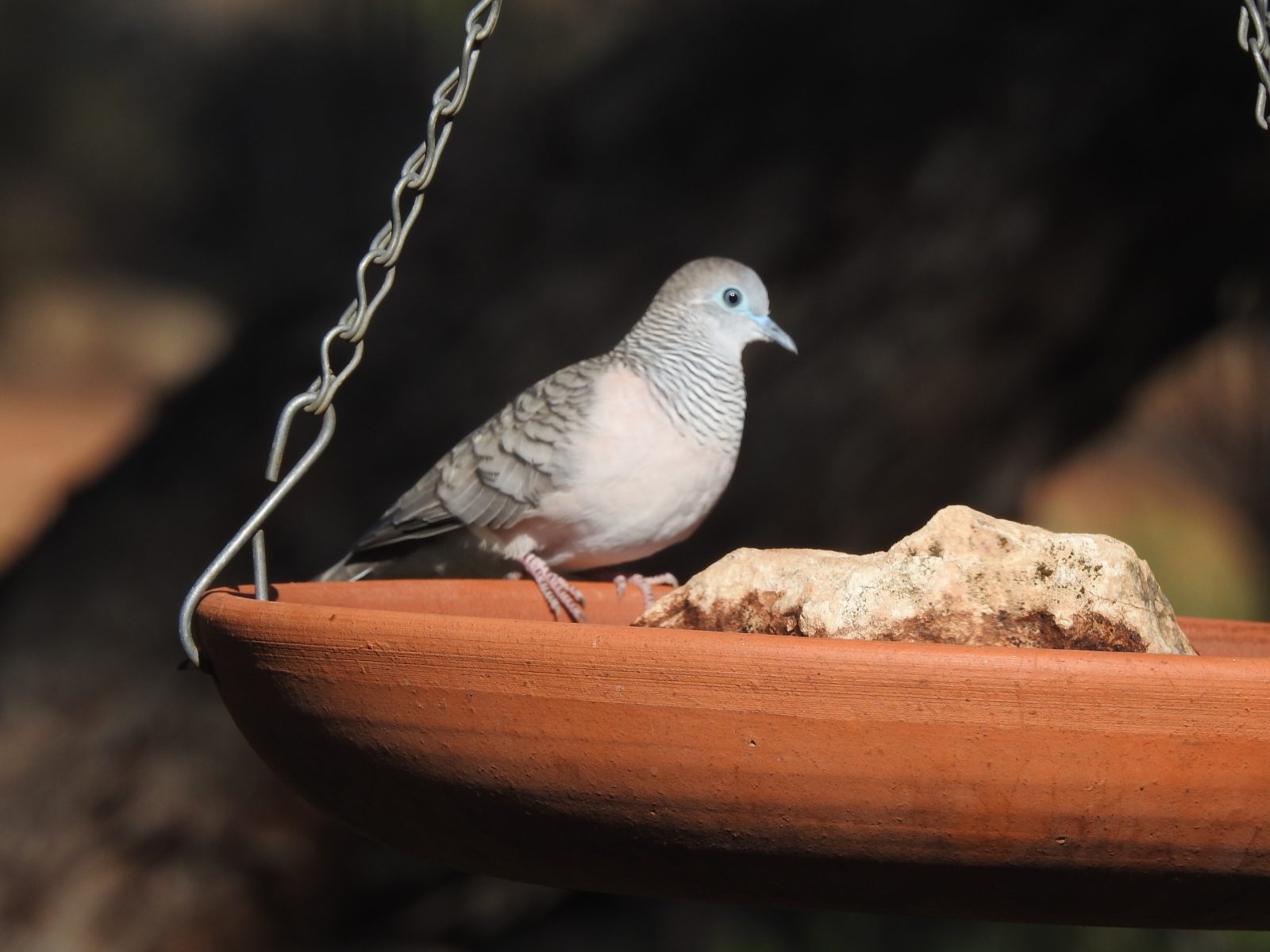
Doves and Pigeons
The most common species in this family of birds is the Crested Pigeon. They are a resident breeding species, meaning that they are seen every day and have been recorded breeding on my land.
For many years I have recorded Spotted Turtledoves (Spotted Doves) almost every day as well, but in the last few years, I have only seen this species here occasionally. The same applies the Rock Doves (Feral Pigeons) which are now only recorded occasionally. One other species, the Common Bronzewing, has only been sighted here on a handful of occasions.
In the first 20 years living here I only occasionally sighted Peaceful Doves. Then an individual would sometimes move down the hills to the west and visit my garden for an hour or two. On checking my database of records, I started seeing them regularly from late 2009. Over the next decade, they have become resident and I hear and see one or more every day.
At first I only saw one of two until more recently when I have recorded up to six in close proximity to each other. Only a few days ago I looked out the window to see four of them sunning themselves all within a square metre. It has become one of my favourite birds and I feel so privileged to see and hear them regularly here at home.
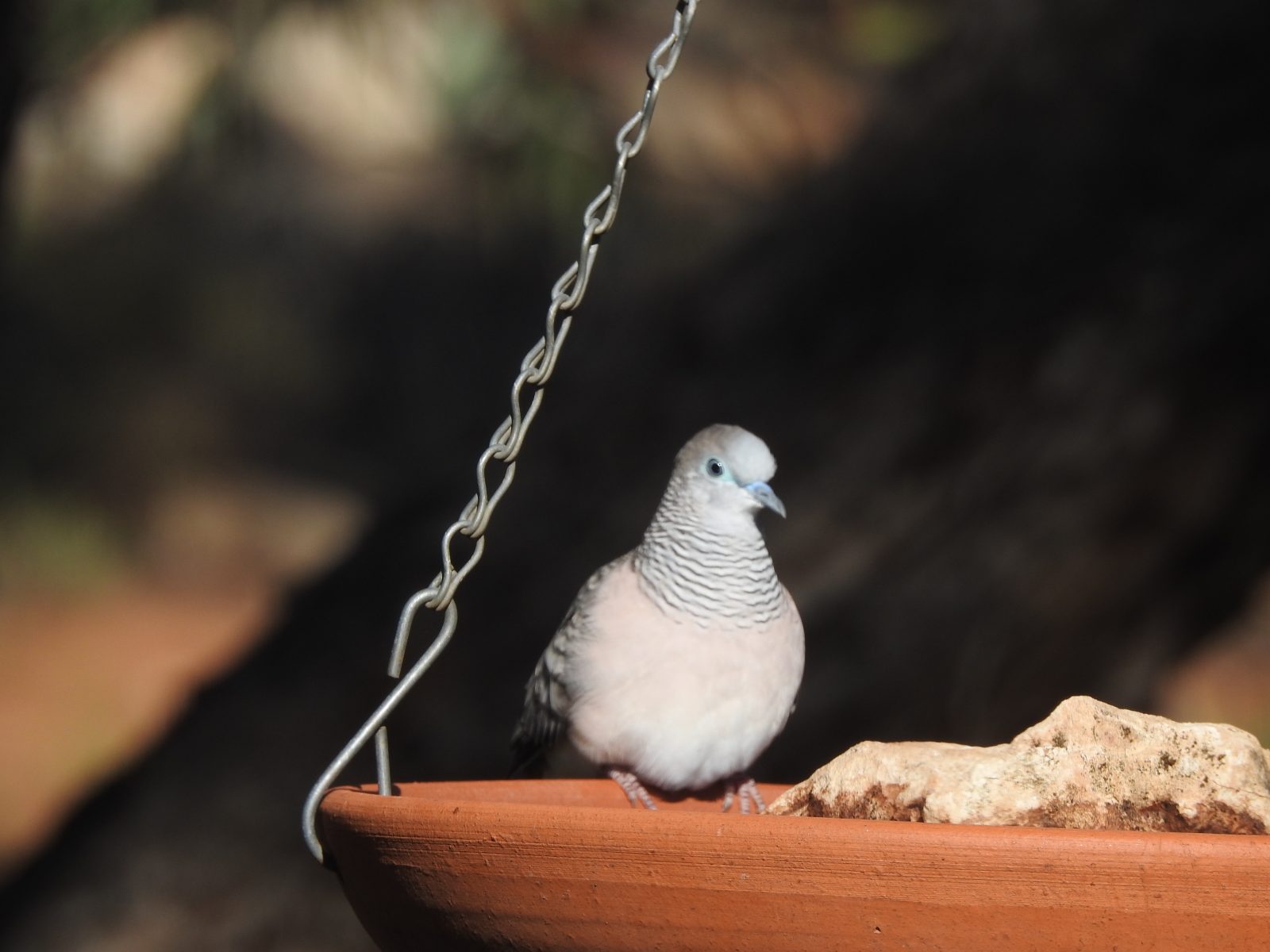
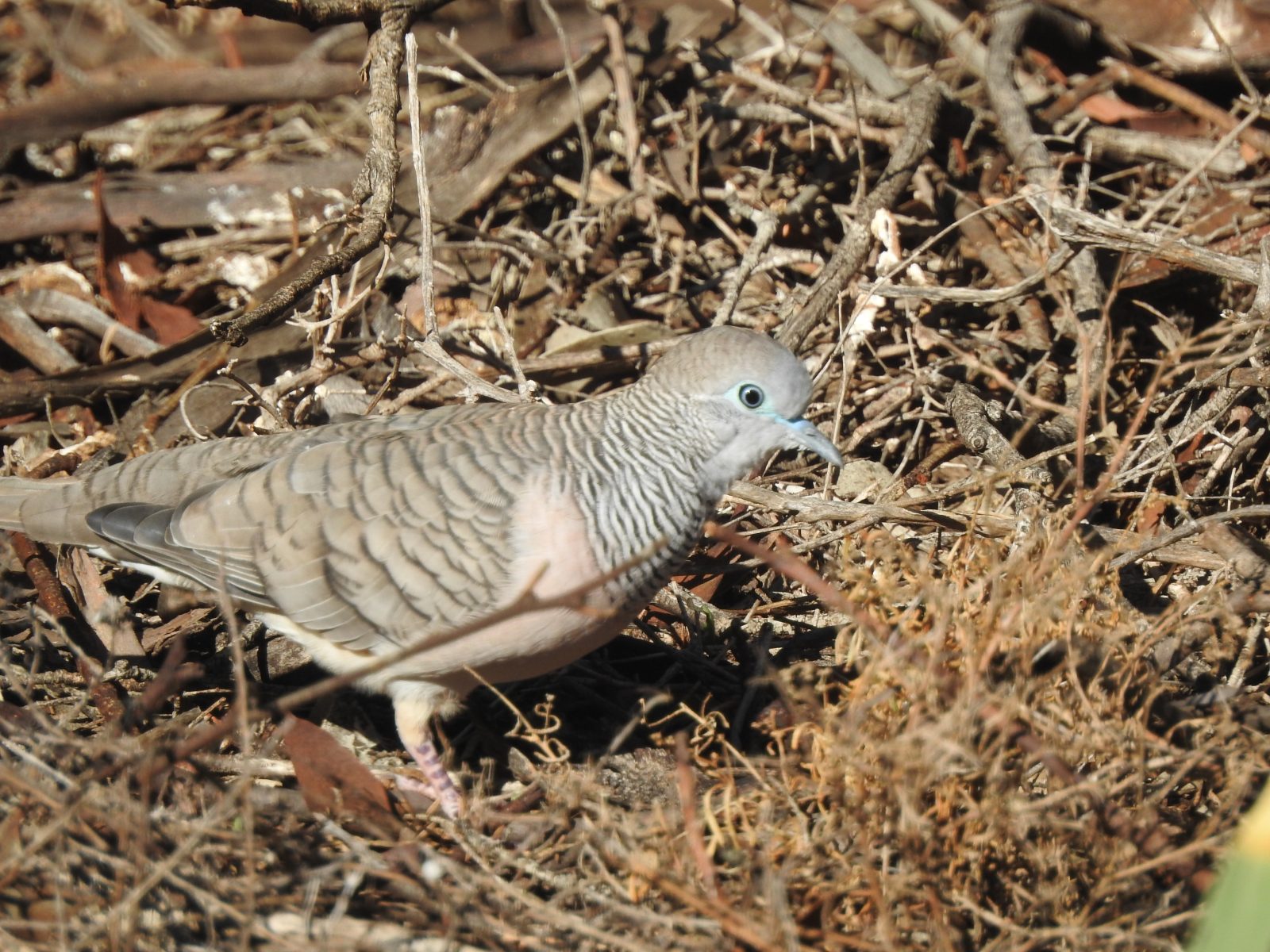
Bronzewing Pigeons at the Australian Reptile Park
The Common Bronzewing Pigeon is a widespread species in the mallee areas of South Australia where I live, as well as being relatively common throughout its range where suitable habitat exists. It is scarce in the drier parts of the continent.
The photos shown in today’s post were taken on a recent family visit to the Australian Reptile Park near Gosford north of Sydney. These birds were not wild birds but individuals kept in one of the aviaries there. I feature them here because of their beautiful colours.
The bird immediately below this text is not as colourful. It could be a juvenile, or the lack of colour could be the angle of the sun on the feathers. It looks more fluffed up than normal; it was a very cold day.
The prominent yellow-buff colouring on the males in the top and bottom photos is particularly striking, something I haven’t observed in the natural environment. In their natural habitat they tend not to sit nicely like these in one of the walk through aviaries in the reptile park. I usually just see a blurred shape of a bird fast disappearing into the distance.
Crested Pigeons nesting in our garden
On our return from a recent holiday in Sydney we were having lunch on the back veranda. I was watching a Crested Pigeon fussing about in a tree about twenty metres away. Next thing it settled down as if on a nest. I left my food – actually I think I was at the cuppa stage of the meal – and moved slowly and carefully towards the nest. I’d remembered to go inside to get my camera first.
Sure enough – the pigeon was sitting on a nest. Crested Pigeons are very common around Murray Bridge. At times I have counted up to 50 sitting perched on power lines, often in a row. It’s quite a spectacular sight, though it is not common to see so many at one location. Loose groups of 5 to 15 are quite common, however.
Crested Pigeons are what I call a resident breeding species, meaning, they are resident all the year and that they breed in our garden. The nest shown in today’s photos is quite a substantial nest for a pigeon. Most pigeons and doves are not fastidious or elaborate when it comes to nest building. They seem to think that a dozen or so flimsy sticks placed at random in the fork of any tree or bush will do as a home for their chicks. How the eggs don’t fall through some nests I’ve seen is amazing. Still, they seem to manage; there are a lot of them around!
My writing of this post was interrupted by the load of washing finishing, and I am the one in our household who usually does the washing. The pigeon’s nest is near the clothes line and the bird is sitting tight, even when we walk within a few metres of the nest. She must have eggs, I think. I will keep a watch on proceedings.
UPDATE: January 22nd: over the last week we have had a heatwave with five days over 42C with several over 45C (113F). This was followed by several days of wild wind which broke several branches off our trees. The nest is still there but appears to have been abandoned.
White-headed Pigeon, Adelaide Zoo
One of the walk through aviaries at the Adelaide Zoo has quite a large collection of pigeons, including these White-headed Pigeons. I have visited this aviary on many occasions and usually many of the pigeons are actively scratching around in the dirt on the floor of aviary or feeding from one of the feed trays. Usually, however, some of the birds prefer to just sit on a branch of the many trees growing inside the large cage.
The bird above looks cold, huddled on the branch like that. If my memory is correct it was actually quite a warm day; it certainly was in mid-January, one of our hotter months. Looking carefully at the bird above, however, it appears to be a juvenile. On almost every visit to this aviary I’ve several pigeons, this species included, either making a nest or sitting on eggs. If, as I suspect, it is a recently fledged bird, it would explain why it is all fluffed up like that.
To read more about this species and to see better photos I have taken click here.
